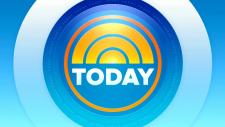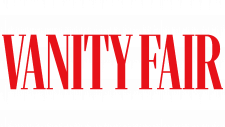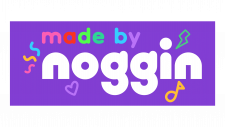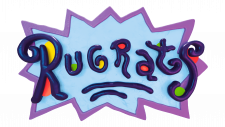Comedy Central Logo
Comedy Central stands as a beacon of humor, crafted by the creative minds at Time Warner and Viacom. Born in the bustling heart of New York City, its inception aimed to fill homes with laughter and joy. As a cable channel, Comedy Central brings a plethora of comedy genres, from stand-up specials to satirical news shows. The channel has become synonymous with cutting-edge comedy, offering viewers an escape into a world of humor and satire. It serves as a platform for both established and upcoming comedians to showcase their talent.
Meaning and history
Comedy Central first lit up television screens on April 1, 1991, marking the beginning of its journey as a cornerstone of comic relief. The channel was the result of a merger between two comedy networks, Ha! and The Comedy Channel, which aimed to create a singular destination for comedy lovers. Over the years, Comedy Central has launched iconic shows that have become a part of popular culture, such as “South Park” (1997) and “The Daily Show” (1996). These shows not only entertain but also provide commentary on societal issues, making Comedy Central a significant player in the entertainment industry. The network has evolved, adapting to the digital age by offering content online, yet its mission remains unchanged: to keep the world laughing.
What is Comedy Central?
Comedy Central is a television network that specializes in all things humor. From sketch shows and stand-up comedy specials to sitcoms and satirical news programs, it offers a wide range of comedic content. The channel has become a home for groundbreaking comedy, providing a platform for both new and seasoned comedians to share their work with a global audience.
1988
The logo splashes onto the scene with audacious vibrancy. Bold, red letters proclaim “THE COMEDY CHANNEL”, heralding a realm of humor. Above, a quirky “C” peeks out, its form a playful patchwork of yellow with meandering lines, capped with a gleaming blue eye, complete with a cheeky wink. This whimsical eye seems to nod at the audience, inviting them into a world where comedy reigns supreme. The shapes and colors converge to whisper a promise: Here lies laughter, here thrives satire. It’s a mark of mirth, a badge of the jesters’ court.
1989 – 1891
In this iteration, the logo circles back to simplicity. The eye is gone, leaving a bold, red “C” encircling the words “THE COMEDY CHANNEL”. The text hugs the curve of the “C”, emphasizing unity and continuity. This design is cleaner, crisper, with a focus on the circular motif, reminiscent of a spotlight on a stand-up stage. The overall look is stripped back, yet it retains a punchy impact, echoing the sharp wit of the content it represents. It speaks of a straightforward mission: to deliver comedy, pure and undiluted.
1990 – 1991
The logo takes a leap into a bolder statement with a bright orange square border. Inside, “HA!” jumps out in purple, a color of creativity and wit. Below, “TV COMEDY NETWORK” sits in solid black, a grounding presence. The design shifts from circular to blocky, from red to a mix of orange and purple. It’s a palette swap to a more playful, energetic vibe. This logo doesn’t just say comedy, it shouts it, with a declarative “HA!” that captures the spontaneous outburst of laughter. The stark, angular letters contrast sharply against the previous curves, signaling a fresh, edgy direction.
1991
Gone are the orange backdrop and the exclamation of “HA!” Now, “CTV” commands the space in a robust, blue font, dotting the ‘V’ with precision. The colon adds a pause, a visual breath before “THE COMEDY NETWORK” continues in a harmonious font, maintaining the blue theme. It’s a cooler, more composed identity, channeling a more refined comedic sensibility. The bold, capitalized letters deliver a confident declaration of the network’s domain: television comedy. The design’s minimalism suggests a modern, no-frills approach to delivering laughs, focusing purely on the content rather than the container.
1991
This logo discards the previous blue and colon punctuation, opting for stark black text on a clean background. “Comedy Central” is written in a font that is almost cut-out or stamped, giving it an informal, edgy feel. The letters are playful, irregular, and bold, as if to mirror the unpredictable nature of comedy. The design is unapologetically simple, resonating with the straightforwardness of humor itself. It’s a dramatic shift from the formality of “CTV,” exuding a more relaxed, confident vibe that says comedy is for everyone. The logo encapsulates a network that doesn’t take itself too seriously, which is, after all, central to comedy.
1991 – 1992
This vibrant logo bursts with a playful globe cradling a triumphant cityscape, signaling a world of comedy. Above the skyline, a star twinkles, hinting at the spark of humor. Comedy Central’s name wraps the globe in a yellow ribbon, the letters bold and inviting. The purple and brown hues paint a picture of creativity and earthiness, a blend of the extraordinary and the relatable. This emblem is a departure from the black and white simplicity before it, embracing a more illustrative and colorful identity. It suggests not just a channel, but a universe where comedy is celebrated, a global stage for jest and wit.
1992 – 1997
Switching to a monochromatic palette, the globe and banner now don a classic blue and black attire. “COMEDY CENTRAL” remains boldly encased within the banner, ensuring its presence is unmistakable. The buildings atop the globe stand tall, with the central tower’s tip sparkling, suggesting the pinnacle of comedy. This rendition of the logo strips away the previous version’s multiple colors, opting for a more traditional broadcast feel while maintaining the theme of a comedy universe. The simplification to two colors brings a stark, memorable contrast, reinforcing the network’s global reach and its commitment to laughter.
1997 – 2000
In this logo, the previous blue hues are replaced with stark black, offering a striking contrast. The globe and banner have a bold, graphic quality, with “COMEDY CENTRAL” prominently emblazoned across the middle. The shining star atop the central skyscraper remains, a beacon of the channel’s spirited essence. This black-and-white approach gives a nod to classic comedy’s black tie, harking back to a time of slapstick and sharp wit. It’s a timeless look, conveying the universal language of laughter with an air of sophistication and a wink of fun.
2000 – 2010
The evolution continues with an even bolder approach. The globe is minimized, letting the buildings emerge with more prominence. “COMEDY CENTRAL” is emblazoned in front, no longer a ribbon but now a solid, central fixture. The architecture, previously nestled within the globe, now bursts forward, illustrating a dynamic burst of comedy shooting out into the viewer’s space. This logo is more than a symbol, it’s an active statement. It showcases comedy not just as a genre but as an impactful force, outgoing and uncontained. The contrast is as stark as ever, but the energy is amplified, the message clear: Comedy is the centerpiece, the central pillar here.
2011 – 2018
The logo takes a turn towards minimalist design, with a sleek, bold “C” encapsulating the center. Flipped on its side, “COMEDY CENTRAL” is written in a straightforward, no-nonsense font. This new logo leaves behind any imagery that hints at a globe or buildings, choosing instead to lean into the essence of a central focus through the letter “C”. The design strips down to the basics, reflecting a modern, clean aesthetic that’s both sophisticated and instantly recognizable. It’s a significant departure from the previous dynamism, opting for understated confidence.
2018 – Today
The logo retains its clean lines but infuses color with a vibrant yellow “C” that exudes warmth and energy. “COMEDY CENTRAL” stands out in solid black, offering stark contrast and readability. This design shift introduces a playful, friendly vibe while maintaining the logo’s sleekness. The choice of yellow, often associated with joy and creativity, aligns perfectly with the network’s comedic essence. It’s a refreshing, optimistic twist on the previous monochrome theme, signaling a network that’s dynamic and inviting.






















